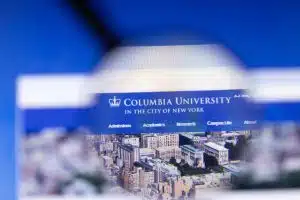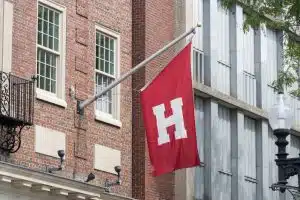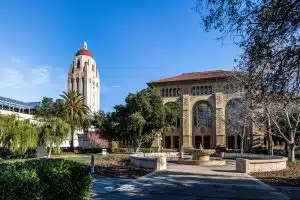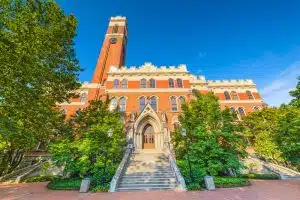How Big Is Dartmouth College?
When people inquire about the size of Dartmouth College, they’re often considering more than just the physical size of the campus. While square footage certainly plays a factor, the student population, faculty numbers, and range of facilities all give an overall sense of the college’s scale and scope.
Understanding the Size of Dartmouth College
The size of Dartmouth College can be discussed in several ways. Two of the most common measures – particularly for prospective students and their families – are its physical size and the number of students. However, understanding the number of faculty and staff also provides invaluable insight.
Physical Size: Campus and Facilities
Dartmouth’s campus covers a vast 269 acres in Hanover, New Hampshire. This expansive area houses all academic buildings, residential housing, athletic facilities, performing arts centers, and more. Every inch teems with history and tradition from the central green to the furthest corner.
Walking through the campus, one can’t help but be captivated by the stunning architecture that blends seamlessly with the natural beauty of the surrounding landscape. The campus is meticulously maintained, with vibrant gardens and well-manicured lawns that create a serene and inspiring atmosphere for students and visitors alike.
Moreover, Dartmouth’s commitment to sustainability is evident in its campus design. The college has implemented various eco-friendly initiatives, such as energy-efficient buildings, renewable energy sources, and recycling programs. This dedication to environmental stewardship further enhances the campus’s appeal and reinforces Dartmouth’s commitment to creating a better future.
The College’s physical size extends beyond the classrooms and residence halls. The practical considerations of its comprehensive libraries, well-equipped laboratories, and sprawling outdoor recreational spaces further enhance the learning experience.
The libraries at Dartmouth are a treasure trove of knowledge, housing an extensive collection of books, journals, and digital resources. Students have access to a wealth of information, ensuring they have the necessary resources to excel in their studies and research endeavors.
The laboratories at Dartmouth are state-of-the-art and equipped with cutting-edge technology and equipment. These facilities provide students with hands-on experience and the opportunity to engage in groundbreaking research across various disciplines.
Dartmouth’s outdoor recreational spaces also allow students to unwind and connect with nature. Picturesque trails and scenic spots surround the campus, providing ample opportunities for hiking, biking, and other outdoor activities. These spaces promote physical well-being and foster a sense of community and camaraderie among students.
Student Population: Undergraduate and Graduate
The student population at Dartmouth also plays a pivotal role in defining its size. The College boasts a strong community of undergraduates, typically around 4,300. In addition, roughly 2,000 graduate students add a further layer of diversity and intellect to the campus community.
With around 6,300 combined undergraduate and graduate students, Dartmouth’s size is significant, fostering a vibrant and diverse community while allowing for individualized faculty attention.
The student body at Dartmouth represents a rich tapestry of backgrounds, cultures, and interests. Students come from all corners of the globe, bringing unique perspectives and experiences that enrich the academic and social fabric of the college.
Furthermore, Dartmouth’s commitment to fostering a close-knit community is evident in its residential life. The college offers a variety of housing options, including traditional dormitories, residential colleges, and affinity-based housing. These living arrangements allow students to form lasting friendships and engage in meaningful discussions outside of the classroom.
Faculty and Staff Numbers
The College’s size is also inferred from its faculty and staff numbers. Dartmouth employs over 1,000 faculty members, protruding a solid commitment to a comprehensive liberal arts education. These dedicated professors are experts in their fields, bringing knowledge and experience to the classroom.
Dartmouth’s Faculty members are passionate about teaching and deeply invested in their students’ success. They provide mentorship, guidance, and personalized attention, ensuring each student receives a transformative educational experience.
Furthermore, many staff members work across various departments and facilities, contributing to the robust support structure for all students. From academic advisors and career counselors to librarians and campus safety officers, these dedicated professionals play a vital role in creating a nurturing and inclusive student environment.
Additionally, Dartmouth’s commitment to research is evident in the number of research centers and institutes it houses. These centers are hubs of innovation and collaboration, attracting renowned scholars and experts worldwide. The research conducted at Dartmouth has far-reaching implications, contributing to advancements in various fields and addressing pressing global challenges.
Breaking Down Dartmouth’s Campus
The Dartmouth campus comprises many buildings and landmarks, contributing significantly to the College’s size. The campus is a vibrant and bustling hub of academic and social activities in the picturesque town of Hanover, New Hampshire.
As you explore the campus, you will encounter a rich tapestry of architectural marvels and cultural landmarks that have shaped the Dartmouth experience for generations of students.
Main Buildings and Landmarks
The campus’s iconic buildings and landmarks include the Baker-Berry Library, Dartmouth Hall, and the Hopkins Center for the Arts. Each building contributes to the expansive character of the campus and plays an essential role in shaping the student experience – academically, socially, and culturally.
Baker-Berry Library stands tall as a beacon of knowledge, housing an extensive collection of books, manuscripts, and digital resources. Its grandeur and tranquility make it a popular spot for students seeking inspiration or a quiet place to study.
Dartmouth Hall, the oldest building on campus, exudes a sense of history and tradition. Its stately columns and red-brick facade serve as a reminder of Dartmouth’s enduring legacy and commitment to academic excellence.
The Hopkins Center for the Arts, fondly known as “the Hop,” is a vibrant cultural hub showcasing diverse artistic performances, exhibitions, and events. From theater productions to musical concerts, the Hop fosters a deep appreciation for the arts among students and the wider community.
Other noteworthy sights include the Collis Center, a hub of student activities, and the historic Hanover Inn, showcasing the college’s links to the local community. The Collis Center buzzes with energy as students gather to socialize, grab a quick bite, or participate in various clubs and organizations. The Hanover Inn, with its charming architecture and cozy ambiance, serves as a welcoming retreat for visitors and a venue for special events.
Residential and Dining Facilities
Dartmouth’s size includes 32 residence halls and five dining facilities. The residence halls range from intimate dormitories to larger complexes, offering a variety of living options for students. Each residence hall has its unique character, fostering community and camaraderie among its residents.
The dining facilities at Dartmouth are a testament to the college’s commitment to providing exceptional culinary experiences. From cozy cafes to spacious dining halls, students can savor various cuisines, catering to diverse tastes and dietary needs. Whether it’s a hearty breakfast before a busy day of classes or a late-night snack during an intense study session, the dining facilities ensure that students are well-nourished and satisfied.
Athletic and Recreational Facilities
With large athletic and recreational facilities, Dartmouth prioritizes physical wellness for its students and staff. At the center of the facilities is the Alumni Gymnasium, a state-of-the-art fitness center equipped with modern exercise equipment, basketball courts, and indoor tracks. It is a hub for students to engage in various sports and fitness activities, promoting a healthy and active lifestyle.
Further outdoor spaces include tennis courts, a golf course, extensive footpaths, and trails for running, biking, and hiking. Dartmouth’s sprawling campus seamlessly blends with the natural beauty of its surroundings, providing students with ample opportunities to enjoy the great outdoors and stay connected with nature. Whether it’s a friendly tennis match or a stroll along the scenic trails, these recreational amenities offer a refreshing escape from the rigors of academic life.
As you navigate Dartmouth’s campus, you will discover that its size extends well beyond its academic resources. It is a vibrant tapestry of architectural wonders, cultural landmarks, and recreational havens that enrich the lives of its students and foster a sense of belonging in the Dartmouth community.
Analyzing Dartmouth’s Student Body
A deeper look at Dartmouth’s student body provides additional perspectives on the college’s size.
Dartmouth College, located in Hanover, New Hampshire, is renowned for its exceptional academic programs and vibrant campus life. With a rich history dating back to its founding in 1769, Dartmouth has evolved into a prestigious institution attracting students from around the globe.
Undergraduate Enrollment Statistics
Approximately 4,300 undergraduate students are enrolled at Dartmouth, representing nearly every state in the U.S. and numerous countries worldwide. This diverse student body brings together individuals from various backgrounds, cultures, and perspectives, fostering a truly global learning environment.
At Dartmouth, the commitment to creating an inclusive community extends beyond diversity in nationality. Additionally, Dartmouth’s dedication to full-need financial aid means that students of all socioeconomic backgrounds can access a Dartmouth education, promoting socioeconomic diversity and breaking down barriers to higher education.
Graduate Enrollment Statistics
Dartmouth’s robust graduate student population enhances the campus’s diversity and intellectual atmosphere. With approximately 2,000 graduate students enrolled in various programs, Dartmouth offers various advanced study and research opportunities.
Dartmouth graduate students pursue diverse fields of study, including engineering, health sciences, arts, humanities, and more. Their presence on campus enriches the academic discourse and fosters interdisciplinary collaborations, contributing to Dartmouth’s reputation as a hub of intellectual curiosity and innovation.
International Student Representation
International students comprise a critical portion of Dartmouth’s student population, reinforcing its status as a global institution. With representation from countries across the globe, these students bring unique perspectives, cultural diversity, and a global outlook to Dartmouth’s campus.
Through their interactions, international students contribute to a vibrant cultural exchange, broadening the horizons of their fellow students and faculty members. Dartmouth’s commitment to global engagement is further exemplified by its robust study abroad programs and partnerships with universities worldwide, providing students with opportunities to explore different cultures and gain a deeper understanding of the interconnectedness of our world.
Dartmouth’s Faculty and Staff
The number of people who work at Dartmouth is a vital component of the college’s size. Let’s delve deeper into the faculty and staff at Dartmouth to understand their role in shaping the educational experience.
Faculty Size and Student-to-Faculty Ratio
With over 1,000 faculty members, Dartmouth strongly emphasizes individualized instruction and small class sizes. This robust faculty body ensures students receive personalized attention and guidance throughout their academic journey. The student-to-faculty ratio at Dartmouth is a favorable 7:1, suggesting that students can expect high interaction with their professors.
At Dartmouth, the faculty is dedicated to teaching and actively involved in groundbreaking research and scholarship. Many professors are leading experts in their fields, contributing to the vibrant intellectual community on campus.
Staff Distribution Across Departments
Dartmouth staff members play a crucial role in supporting the college’s operations and providing essential services to students, faculty, and the broader community. They are distributed across various departments, each contributing to the smooth functioning of the institution.
The academic support department ensures students can access resources and assistance to excel in their studies. From tutoring services to academic advising, Dartmouth’s dedicated staff is committed to helping students reach their full potential.
Administrative services staff handle the administrative and logistical aspects of college operations. They manage budgets, coordinate events, and provide administrative support to various departments, enabling faculty and students to focus on their core academic pursuits.
Building and grounds maintenance staff work diligently to maintain the college’s infrastructure, ensuring the campus remains safe, clean, and aesthetically pleasing. Their efforts contribute to creating a conducive environment for learning and living.
Student services staff are dedicated to supporting students’ personal and social development. They guide on housing, health services, career counseling, and extracurricular activities. These staff members are crucial in fostering a vibrant and inclusive campus community.
The broad distribution of staff across departments indicates Dartmouth’s commitment to providing a Tier-1 educational experience and comprehensive support to its community. The collective efforts of faculty and staff contribute to Dartmouth’s rich and dynamic learning environment.
In conclusion, ‘how big is Dartmouth College?’ is a multifaceted question – and the answer depends as much on the student and faculty populations and the breadth of the college’s facilities as it does on the physical size of the campus. The dedicated faculty and staff at Dartmouth are the backbone of the institution, ensuring that students receive a world-class education and a transformative college experience.









































